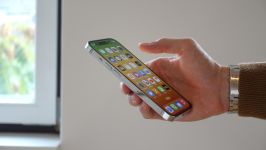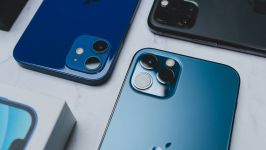Stephen Medaris Bull's work in the intersection of art, technology, and performance encompasses a series of projects that combine interactive media, mobile platforms, and experimental approaches to audience engagement.
These works usually involve audience participation and incorporate elements of real-time interaction, location-based media, or data-driven artistic output. His projects show a continued interest in how technology can change the creation, delivery, and experience of creative content.
Distributed in the United Kingdom through the O2 Network and available for Sony Ericsson devices via the platform Handango, AzZa positioned itself within the early wave of mobile art applications in the mid-2000s.
By utilizing mobile technology for artistic creation, AzZa demonstrated Bull's interest in merging accessibility with creative experimentation. The app enabled non-specialist users to participate in digital art making, expanding involvement in algorithmic and generative art beyond traditional art environments.
Bull also directed AR War of 1812, an augmented reality project funded by the New York Council for the Humanities. Designed as an educational initiative, the project used AR overlays to showcase historical content related to the War of 1812.
The project aimed to make historical interpretation more engaging by providing users with an interactive experience that combined scholarly research with emerging visualization technology. Using AR, it showcased historical stories in a way that increased audience involvement with cultural heritage beyond traditional classrooms or museums.
Bull's notable project in this dominion is Cellphonia, a "cellphone opera" engine. Funded partly by the New York State Council on the Arts, it merges telecom tech with performance art. Participants use mobile phones to add audio recordings to an evolving sound piece.
The platform has been staged in fifteen national and international performances, adapting its format to different thematic contexts and audience groups. The approach combines the collaborative structure of performance art with the networked capabilities of mobile communication systems, transforming the audience into active contributors to the work.
Bull's creative technology projects have been discussed in various media and art criticism outlets. NYArts Magazine profiled his work on mobile art in Molly Kleiman's article "A Phone is a Phone is a...," situating his practice within broader debates about the artistic potential of mobile devices.
The Montreal Mirror reviewed his TouchToneTours initiative, another location-based media project, under the title "Our World and Others," commenting on its capacity to merge real-world exploration with audio-guided storytelling.
Critical commentary on Cellphonia has appeared in the context of the ISEA ZeroOne global festival in San Jose, where art critic Jori Finkel reviewed its innovative use of telecommunications infrastructure for participatory performance.
These responses have generally emphasized the experimental nature of Bull's work and its ability to integrate emerging technology into accessible public art experiences. Across his creative technology portfolio, Bull's projects illustrate a consistent effort to merge conceptual artistic goals with the technical demands of implementation.
In works like AzZa, the artistic aim of democratizing generative art is achieved through careful application of mobile software development. In the AR War of 1812, the educational objective is supported by the choice of AR platforms capable of delivering layered visual information in real-time.
Cellphonia presents another example of this integration, requiring both conceptual clarity in the design of participatory frameworks and technical proficiency in managing telecommunications networks and audio processing systems.
In each case, the technological components are not used merely as tools but as integral elements of the artistic concept, shaping both the structure and the audience's mode of engagement.
By merging artistic vision with technological execution, Bull has created works functioning as cultural commentary, participatory art, and technical experimentation, reflecting contemporary art trends that prioritize interactivity, mobility, and networked communication as key aspects of creative practice.
His projects demonstrate the early use of mobile and AR technologies for cultural and educational purposes, coming before these tools became common in mainstream creative industries.
By connecting the conceptual demands of performance and visual art with the practical needs of mobile and interactive systems, Bull's work in art, technology, and performance continues to demonstrate the possibilities and challenges of integrating these fields.










